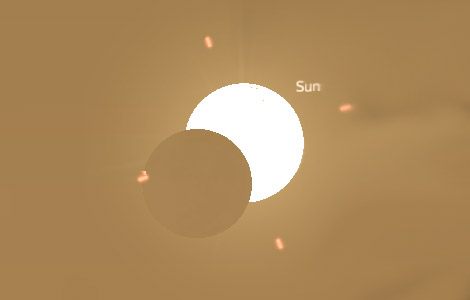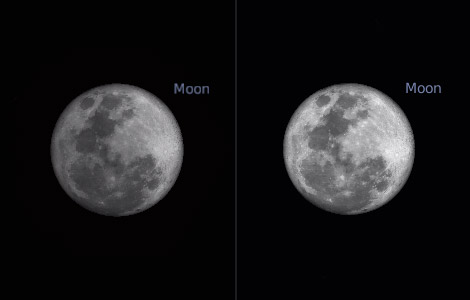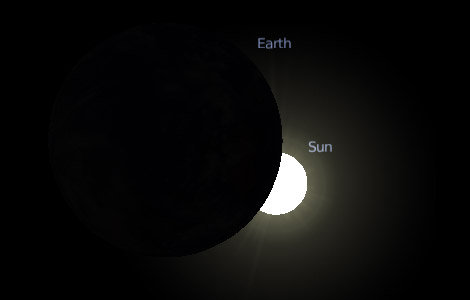Early 2009 Eclipses in Stellarium
Feb 23 2009 Mon
6:45 pm PHT
There were two eclipses that were visible from the Philippines in the last four weeks. The first was a partial solar eclipse that occurred in the late afternoon of January 26 and the second was a penumbral lunar eclipse on the night of February 9. I wasn’t able to view these two eclipses since for the solar eclipse, I couldn’t go out of the office the view of the sun from my office’s windows is blocked by skyscrapers and for the lunar eclipse, I forgot all about it. Besides, since the lunar eclipse was penumbral, it wouldn’t be as spectacular as a partial or even a total lunar eclipse.
Well, thanks to Stellarium, an open-source application that I raved about back in 2007, I am able to “see” these two celestial phenomenons from the comfort of my computer workstation. 
Shown below is a screenshot of the January 26 solar eclipse in Stellarium.
Depicted above on the left half is Stellarium’s simulation of the lunar eclipse. Since the eclipse was penumbral, the effect of the Earth’s shadow is very subtle. The right half of the image shows the full moon hours after the eclipse and only then can you see the difference.
Finally, Stellarium has the ability of showing the night sky from the point of view of other solar system bodies. Shown below is how the lunar eclipse looks like from the moon. So it’s immediately obvious that a penumbral lunar eclipse is equivalent to a partial solar eclipse when you’re on the moon. Stellarium’s simulation of this kind of eclipse is not yet developed since you’re supposed to see a faint reddish glow around the Earth’s disk, an artifact of the Earth’s atmosphere.
For real pictures of the January solar eclipse, check out this blog post by Azrael.
Anyway, I’m already looking forward to actually seeing the July 22 partial solar eclipse later this year. 



Comments
[an error occurred while processing this directive]